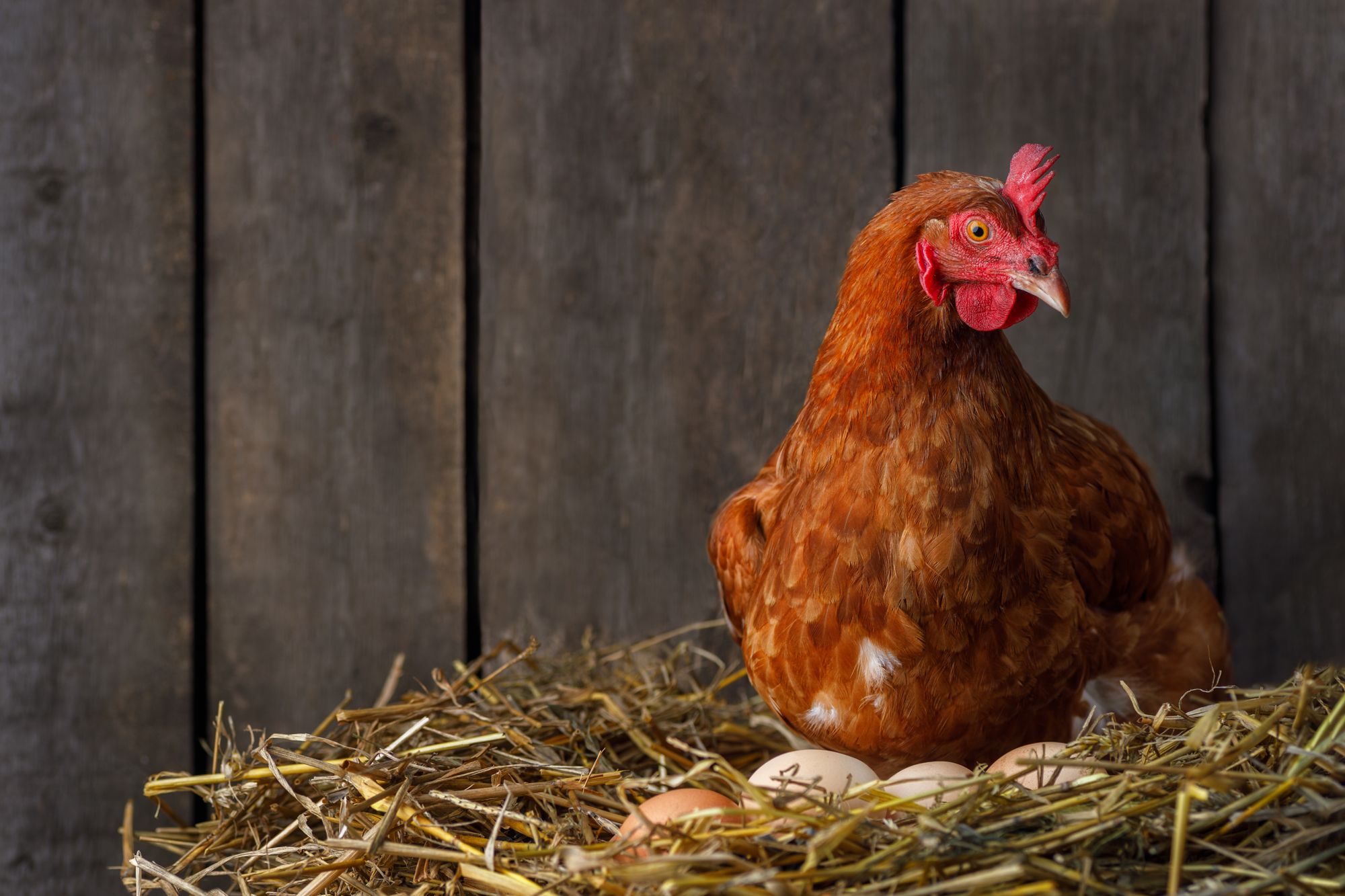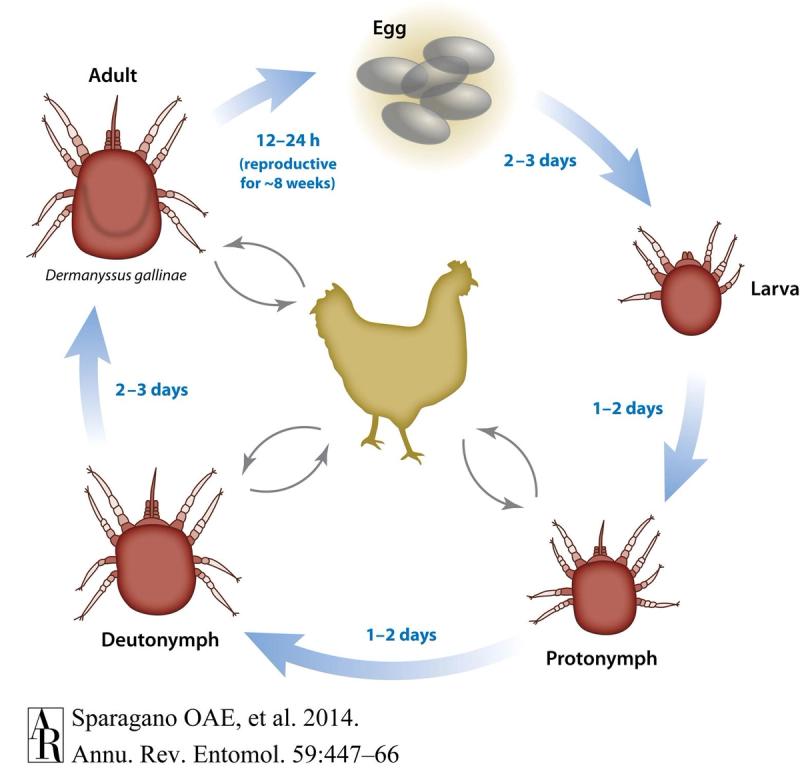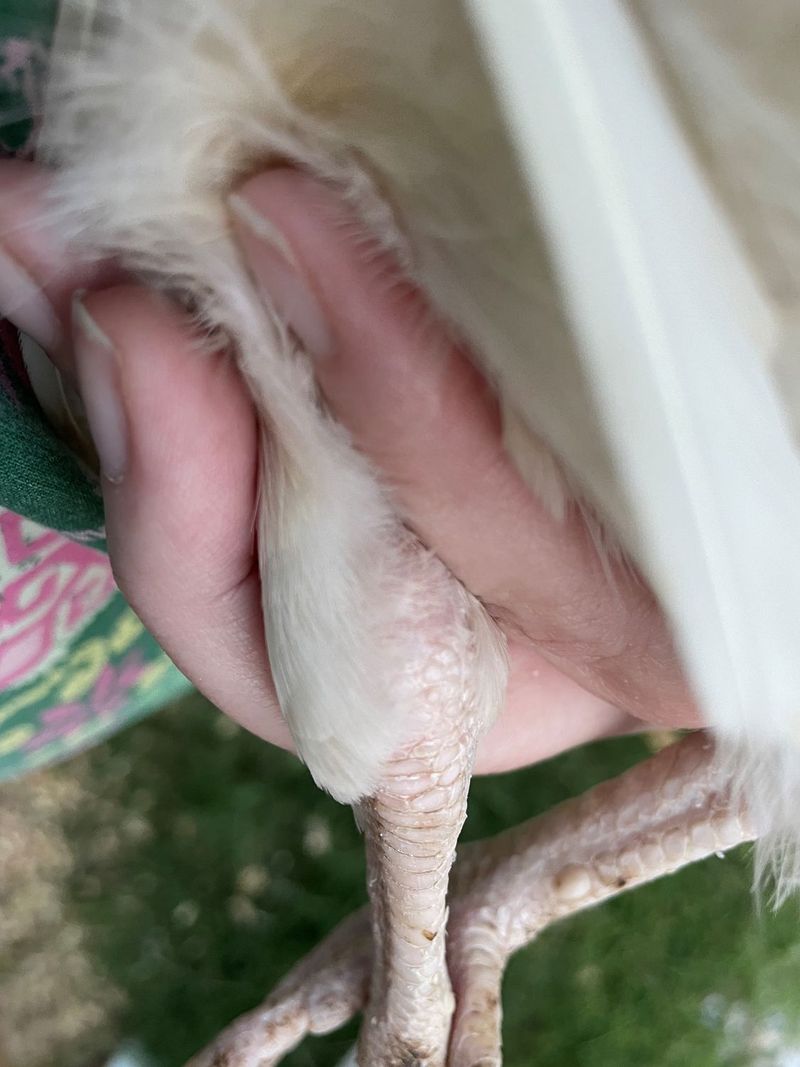The Stealthy Chicken Red Mite
Get to know these bloodsucking coop bandits


Written by Dr. Bridget McCrea
June 23, 2023
There are several different kinds of mites in our world. Of those external parasites, you only really need to worry about five of them as they relate to poultry. The one we are focusing on is the Poultry Red Mite or Dermanyssus gallinae (aka Chicken Red Mite, Roost Mite).
Do I have red mites?
Chickens that are enduring an infestation will show you in two telling ways. First, birds will express stress related behaviors: Increased levels of preening, head scratching, and some gentle feather pecking. Feather quality on chickens will be poorer. Chickens will also weigh less due to the stress.
In hens, egg production will decrease even though hens are increasing their feed and water intake. This leads to a lower feed conversion ratio.
Second, birds will experience anemia. Remember, this is a haematophagous ectoparasite which means that they crawl on your birds to bite them and drink blood. That sometimes means that your hens will have pale combs and faces. In a particularly bad infestation with chicken red mites, hens may lose more than 3% of their blood by volume every night. Severe anemia can also be followed by death.

Know your enemy activity
How do you find and identify this enemy? Well, here is where things get a little tricky. They hide really well! They crawl on your birds at night and then go hide in the chicken coop environment during the day.
To see them, you are going to need to grab a flashlight and wait until after dark. These parasites are most active 5 to 11 hours after darkness.
When your chickens go to roost at night, the mites come out and crawl along the roost to find the host. They crawl up the legs to the point where the scales on the legs end and the feathers begin. The skin there is not protected by scales and quite often this is where the mites will bite the bird. That does not mean that they will not travel up to the breast or thigh areas and drink there.
The red mite is not always bright red, rather they are bright red after a blood meal. So that means that they look similar to Northern Fowl Mites.
They are tiny so you will need to look closely at what looks a bit like dirt on the birds.
When not feeding on your chickens, the red mites live in the chicken coop environment. They congregate in cracks and crevices. Remember, they are not always red and are very small. They will even inhabit spaces around nest boxes or in the shavings themselves.
The red mite is not always bright red, rather they are bright red after a blood meal. So that means that they look similar to Northern Fowl Mites.
They are tiny so you will need to look closely at what looks a bit like dirt on the birds.
When not feeding on your chickens, the red mites live in the chicken coop environment. They congregate in cracks and crevices. Remember, they are not always red and are very small. They will even inhabit spaces around nest boxes or in the shavings themselves.

Monitoring your flock
You can do some passive monitoring twice a month. There are three simple methods that we recommend you try.
The first method uses blue painter's tape. Purchase 1 inch width tape and wrap it around the roost near where the walls meet the roost. Wrap it so that the sticky side faces away from the roosting pole. That means any mite that crawls along the roost will need to walk across the tape and get stuck.
It would be best to do this after the chickens go to roost at night, otherwise your blue tape may become a toy and be removed.
The alternative is to place the tape out of the reach of your chickens, again sticky side out. This may mean placing it above nest boxes or along walls.
The second is using a Rickstick. This is a 1-inch PVC tube with a stick inside of it. The stick will need to be slightly smaller in diameter than the PVC tube. Again, chickens will want to play with anything new in the coop so you will need to place the stick inside the PVC tube, then halfway down the tube, put a screw in the PVC and stick. That will keep chickens from yanking the stick out of the tube.
You can mount this tube on the underside of roosts using cable ties or along walls using a longer screw. During the day, on a weekly basis, back the screw out and pull the stick out to see if you have any red mites present.
A third method again uses a PVC pipe mounted in similar locations to the Rickstick. Instead of a stick inside, you will roll up a piece of cardboard. The length of the cardboard should not stick out of the sides of the PVC pipe or the chickens may pull it free.
The cardboard should be rolled up tight and placed in the tube for a week.
Pull the cardboard out and search for mites, keeping in mind that you may need to pull the cardboard apart to see if mites are hiding inside the ridges between the inner and outer layer of cardboard.
An ounce of prevention
Regular cleaning disturbs hiding spots so you are encouraged annually to aggressively deconstruct your coop during your annual spring cleaning. Painting the inside of the coop is another way to cover up many of the cracks and crevices in which mites like to hide during the day.
An alternative is to use a silicone gel to seal larger cracks and crevices. One of the plusses of having a painted interior to the coop is that it is much easier to clean and disinfect.
If you choose a light color, mites are easier to see.
They're here! What now?
When treating birds, dusts and liquids should be applied directly to the skin. That means that treating the chickens is time consuming and messy. Depending on what treatment you use, you should wear gloves or a mask to protect yourself.
Regardless of the product you choose, please read and follow the label directions. Sometimes the mixing instructions for spraying on the birds is different than for spraying the chicken coop environment. There are brand name products such as Permethrin 11, GardStar, Prozap, PyGanic (organic option}, Ravap EC, Rabon 50, Beetle Shield 6, and Malathion 50.
You can also use food grade Diatomaceous Earth (DE}, but take care that neither you, nor your birds, breathe the dust. Application rates for DE will need to increase when humidity levels are high.
There are social media posts about using essential oils, but nearly all refer to in vitro, and not in vivo, studies. That means they have been tested in a lab, but not on chickens, eggs, or the chicken coop. Toxicity profiling, along with testing potency within the coop and chickens, should be followed up with shelf-life testing in order for you to know if it works well.
Otherwise, an incomplete kill of Chicken Red Mites in the coop, and on the birds, may lead to resistance.
So bring a bucket, a flashlight, and some patience for your flock examination. Flock maintenance, such as looking for external parasites, is a thankless job, but your chickens will be healthier in the long run. For once, I hope you have no luck in your search!
Tags:Plain Talk

Chicken Whisperer is part of the Catalyst Communications Network publication family.










